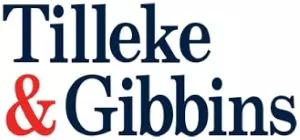Thailand has long been a popular country for companies to have goods manufactured. It has a skilled labor force, especially when it comes to apparel, and it offers competitive labor costs. But it is vital to have strong license agreements in place when authorizing such companies to manufacture and/or distribute your goods to ensure that these benefits do not suddenly turn into problems.
For one reason or another, most license arrangements come to an end. However, care must be taken to ensure that the licensed activities also come to an end. A common problem in Thailand, and indeed in Asia, is that ex-licensees will continue to manufacture, distribute, or sell the goods following termination of the agreement. It is important to have very clear termination and phase-out clauses in the license agreement so that each party knows exactly what they are allowed to do following termination.
Clarity on such issues also makes recourse to the courts much easier, if the ex-licensee continues their activities when not authorized to do so. The unauthorized activities of the ex-licensee could qualify as breach of contract in addition to possible trademark infringement. In a situation where the written contract is clear and there is evidence that the ex-licensee is continuing to manufacture and distribute goods post-termination, what courses of action does the IP rights holder have?
Taking Action
It is unlikely that the police would want to get involved here, since they would deem it a civil matter. It would therefore be difficult to initiate a criminal raid action in such circumstances. An option definitely worth considering would be to apply for a search-and-seize order via the civil courts (the "Anton Piller" order). However, to ensure the highest chances of success in obtaining such an order from the court, the following criteria should be present:
- A strong prima facie case with clear legal grounds for the action
- Risk of irreparable harm
- An emergency situation
Having clear termination and phase-out clauses in a license agreement improves the strength of the prima facie case and legal grounds. Also, if the rights holder can gather actual evidence of the ongoing unauthorized manufacturing or other activities, this would give significant weight to the case.
As for risk of irreparable harm, there must be evidence of damage but also that such damage would not likely be recovered if the action proceeded to a final hearing. Demonstrating an emergency situation could be linked to the irreparable harm, but would normally involve goods being moved or evidence of infringement disappearing. In these circumstances, the civil search-and-seize order could be an efficient way to secure evidence of infringement and prevent further damage being done to the brand and indeed the local market.
Recent Experience
In a recent case handled by Tilleke & Gibbins, one of our apparel clients ended an agreement with a licensee that was authorized to distribute in Thailand and have goods manufactured by prior-authorized factories. Subsequent to the termination, our client wished to enter into another arrangement with a new licensee.
The problem was that the ex-licensee was continuing to instruct unauthorized factories. These factories were far below the standard that this client would normally authorize—not only in terms of quality, but also in relation to health and safety and labor law standards, including the employment of underage workers. The low-quality unauthorized product was flooding the market and lowering the brand value. This made the future licensee uneasy about signing up as the next distributor. The goods were being made in breach of contract, as there were clear phase-out provisions that were not being met, not to mention the substandard factories. Also, the unauthorized manufacturing constituted fresh acts of trademark infringement.
Taken together, these factors provided a good prima facie case for our client to pursue action, but fairly weak arguments on the irreparable harm and emergency situation requirements for a search-and-seize ("Anton Piller") order. During the course of considering what action to take, coincidentally, the ex-licensee commenced a clearance sale in Bangkok to try to get rid of all stock. Items were being heavily discounted at up to 90 percent off retail prices. This sale gave rise to the risk of irreparable harm and an emergency situation, since all the stock could well be sold within one to two weeks.
We were able to obtain the Anton Piller order against the ex-licensee as all three requirements for the order were present. The Court Execution Office carried out the execution of the order and seized all stock at the ex-licensee's premises. This stock will now be held by the Court Execution Office until final resolution of the matter, either by judgment of the Court or settlement.
In the past few years, Anton Piller orders have not often been granted by the civil courts in a trademark infringement situation. However, this case shows that in certain circumstances, such as when dealing with a problematic ex-licensee, the Anton Piller order can prove to be an extremely helpful tool.
The content of this article is intended to provide a general guide to the subject matter. Specialist advice should be sought about your specific circumstances.

